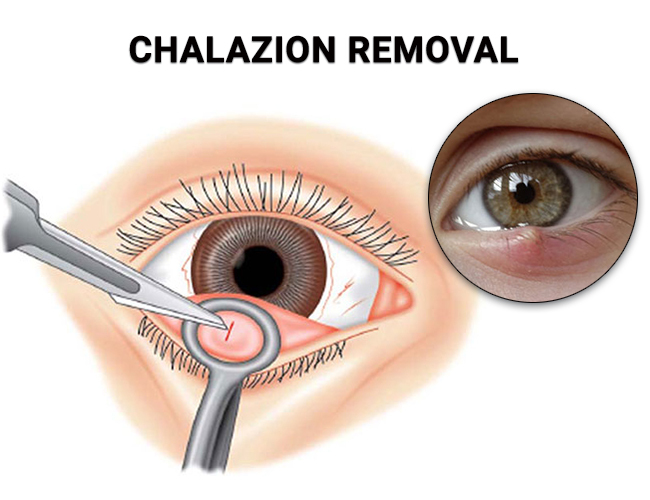 (212) 861-9797
(212) 861-9797
 (212) 861-9797
(212) 861-9797
A chalazion is a cyst on your eyelid. While annoying and unattractive, these cysts aren’t really that dangerous, unless you can’t leave it alone. Sometimes, you can treat them at home with simple techniques, but if that doesn’t work, you need to make an appointment with a skilled ophthalmologist like the experts at Vitreous Retina Macula Consultants of New York, with offices in Manhattan, Brooklyn, and Westchester. They can treat your chalazion, even if it takes minimally invasive surgery, although that’s never the first option. Call today for a consultation to get rid of that cyst.
Your eyelids have small oil glands, called meibomian glands, just below the base of your eyelashes. These glands generate an oily substance to lubricate your eyes. But when those glands get clogged, they become inflamed and eventually form a growth that’s referred to as a chalazion. It’s also known as a meibomian cyst.

A chalazion begins gradually as a small, red bump on your eyelid that may be painful. The condition isn’t an infection, however. After a few days, the pain usually subsides, but the cyst keeps growing. It can reach the size of a pea. While a chalazion tends to form on your upper eyelid, one may appear on the lower one, as well.
Although chalazia, which is the plural for a chalazion, occur most often in adults between the ages of 30 to 50, they do occasionally appear in children. If you suffer from this condition, visit our eye care center at Vitreous Retina Macula Consultants of New York. VRMNY has some of the best retina doctors for the excision of chalazion in New York City. They’re top-rated ophthalmologists who specialize in chalazion management.
The majority of chalazia require very little medical care. Many tend to disappear on their own after a week or so. After visiting your eye doctor in NYC to ensure you don’t have an infection or another underlying condition, you may be advised to try some techniques that include:
Under no circumstances should you attempt to squeeze the cyst to try to force it to drain. Do not try to pop it, either. Any pressure applied to your chalazion only makes it worse. Avoid using makeup or contact lenses until the cyst has completely healed. If your chalazion cyst doesn’t drain with these at-home treatments, you may need further intervention from one of the expert ophthalmologists at VRMNY.
Dr.Engelbert has been seeing my employer, Mr. Khazaneh for about 2 years and he is very pleased and admires his professionalism. Along with his staff they provide excellent and exceptional care. Highly recommended!
RIA P. GoogleIf your VRMNY ophthalmologist decides that your chalazion may respond well to injection therapy, the doctor may inject a corticosteroid called triamcinolone acetonide. This safe, simple in-office procedure has proven to be a successful method of chalazion removal, according to a scientific study published by the National Institute of Health’s National Library of Medicine. In the study of 24 cases, the results concluded with:
Corticosteroid injections are particularly effective when there’s no secondary infection of the chalazion. In that case, the success rate is nearly 100 percent. Injection therapy is highly recommended if you or your child is allergic to local anesthetics. Eye doctors also prefer this method of eye cyst removal if your chalazion is too close to the duct that drains your tears to your nasal passage, known as the lacrimal punctum. Your VRMNY ophthalmologists are experienced in this technique.
If neither a warm compress nor corticosteroid injections successfully remove your chalazion, your VRMNY ophthalmologist may decide that chalazion excision surgery is necessary. This is always the last option considered, and if necessary, your ophthalmologist performs this surgical procedure on a convenient outpatient basis. Preparation for the procedure involves:
Your ophthalmologist usually needs between 10 and 20 minutes to perform your outpatient eye stye removal. The procedure follows a series of steps that include:
You can expect a speedy recovery after your chalazion removal treatment at VRMNY. Post-surgery recovery chalazion treatments usually include:
When you choose VRMNY for your eye care, you can expect the best eye cyst treatment and advice. Contact the top ophthalmologists for the excision of your chalazion to schedule your initial consultation in Manhattan, Brooklyn or Westchester.
Let us help you enjoy your life
Call: (212) 861-9797To Speak With An Appointment Coordinator Now